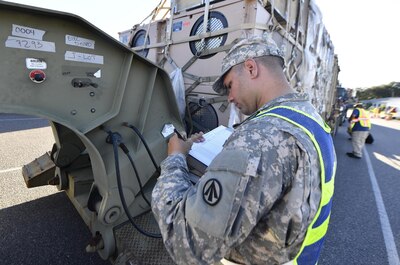By Cheryl Pellerin DoD News, Defense Media Activity
WASHINGTON, Oct. 26, 2017 — Four people and two
organizations were recognized with this year’s Spirit of Hope Award for service
they provide to soldiers, sailors, airmen, Marines, Coast Guardsmen and
civilian Defense Department employees all over the world, the vice chairman of
the Joint Chiefs of Staff said here today.
Air Force Gen. Paul J. Selva provided keynote remarks and
presented awards at the Pentagon ceremony.
Bob Hope: Legendary Actor, Comedian
The award was named for actor and comedian Bob Hope, who
after 57 years of entertaining troops during wars and conflicts around the
world with the USO, in October 1997 was named by Congress as an honorary member
of the armed forces -- the only person to receive that honor.
Each recipient received a bronze medallion bearing Hope’s
likeness.
“Bob Hope conducted his final USO tour in the Middle East in
1990,” Selva said. “Since that time the United States has been at war more than
it's been at peace. Never before in our history has our force been asked to do
so much for so long with so few.”
More than 82,000 troops are deployed worldwide, away from
their homes, defending the U.S.’s vital interests, he added, and nearly 20
percent of that 82,000 are on their fourth deployment or more.
“We've asked an awful lot of our young men and women, Selva
said, “and we should be incredibly grateful to every individual and
organization that pours out their support and resources to help ease the burden
that is carried by those members of our armed forces.”
Spirit of Hope Awardees
-- Office of the Secretary of Defense Recipient: Robert
Irvine, world-class chef, founder of the Robert Irvine Foundation.
Irvine established the foundation in 2014 to support
veterans and veteran causes that need the most help. He gives the foundation
proceeds from his food company, and donates his time by attending troop rallies
held by the Gary Sinise Foundation and touring regularly with the USO.
-- Army Recipient: Jennifer Corriea, Bridge Family Readiness
Support Advisor.
Corriea’s efforts have provided families with critical
medical emergency procedures, helped with their transition to a foreign
country, and enriched their lives by providing opportunities for cultural
experiences.
-- Marine Corps Recipient: Richard Stone, Special Forces
Home for Christmas Fund.
This organization is committed to sending financially
challenged Marines home for Christmas. It provides support for four Marine
Corps battalions and since 2003 has sent 650 Marines home for the Christmas
holiday by commercial air. It also hosts events to thank the Marines for their
service.
-- Navy Recipient: Jim Marshall, retired chief petty
officer.
Marshall has been a highly dedicated and selfless supporter
of service members and their families in the Cheyenne, Wyoming, community for
more than a decade. He established himself as a community leader, joining
several community service organizations and stepping up as Toys for Tots coordinator
for two Marines deployed to Iraq.
-- Air Force Recipient: Kevin Ott, Budget Analyst, 28th
Communications Squadron.
Ott galvanized the military and veteran community across the
Black Hills of South Dakota into an active and visible coalition. He created
two annual events, and to tackle the rising number of suicides, launched a
grassroots effort to provide a recurring social media and physical fraternity.
-- Coast Guard Recipient: Ann O’Connor, Trees for Troops.
Over the past 10 holiday seasons the Trees for Troops
program has been an integral part of Coast Guard morale, well-being and
recreation programs through its free tree distribution effort. The program
provides free, farm-grown Christmas trees to service members in all branches of
the military and their families.
During the awards ceremony, Selva said that the department
is incredibly grateful to Hope's family, whose members were in the audience,
“for continuing to sponsor this award so that we can recognize those men and
women in organizations who give so much back to the nation.”









